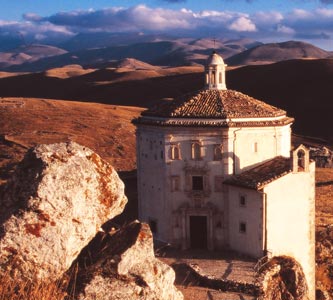Compagnia dei parchi, for sustainable tourism
What problem does it solves?
Compagnia dei Parchi (CDP) was launched in 1999, with European Union funding. It began as a pilot project for sustainable tourism and development in the protected areas of the National Park of the Gran Sasso and Monti della Laga, the National Park of the Majella, and the National Park of the Monti Sibillini.
CDP strives to valorise and promote park areas by acquiring and developing available tourist accommodation. From the outset, CDP has achieved concrete results, creating for the parks concerned an accommodation database and a catalogue of services for non-package tourism, which includes 500 rentable properties. 
In 2001, CDP became a non-profit, limited liability consortium (S.C.R.L.). It focuses on organising and promoting hospitality in Italy’s protected areas by bringing together in a network non-conventional forms of accommodation such as farmhouses, country villas, Alpine cottages, traditional village houses, B&Bs and agritourisms (farm-holiday enterprises). CDP centralises the promotion and marketing of the network of accommodation available, so solving the problem of a fragmented supply, which could not be addressed at local level.
The institutions that founded Compagnia dei Parchi and that are involved in its work are:
• Legambiente. This is Italy’s leading environmental association with 1,000 local branches, 20 regional committees, and more than 110,000 members and supporters. Legambiente works to raise awareness in areas where the CDP approach is or can be applied.
• Fedeparchi. The Italian Federation of Parks and Nature Reserves groups together 17 national parks, 69 regional parks, and 9 nature reserves, land and marine. Internationally recognised, it raises awareness among the institutions and bodies that are already or potentially involved.
• Carsa S.p.A This is a communication enterprise that focuses on environmental planning and development. It co-ordinates and manages CDP. It promoted the original idea and has developed the organisational model and marketing and communication strategy.
• Gruppo CRESME ricerche S.p.A. This is a research company. It has provided the methods for analysing the territories, their socio-economic aspects, and their level of competitiveness.
• Parks. The National Park of the Gran Sasso and Monti della Laga, the National Park of the Majella and the National Park of the Monti Sibillini were the first to adopt the CDP model in their areas. 
According to research conducted by CDP’s tourism observatory, the municipalities in Italy’s national parks attract 118 million tourists, who bring in 5,500 million euro and sustain more than 104,000 jobs. Moreover, the growing trend in excursions is by itself able to generate 1,400 million euro in these localities. This is a growing market, and CDP is contributing to its rational development by disseminating a network-based culture of hospitality and by organising the previously fragmented supply.
CDP enables income generation from existing properties (houses and other forms of accommodation) and from local products (specialities, handicrafts and small enterprises), and also promotes the development of new tourism-related services. The approaches adopted allow local actors to achieve real economic returns, also within a short time, for a minimal outlay in terms of investment and training. In general, development in traditional tourist destinations has taken place through outside investment, with negative effects on local cultural models and with little benefit for the local microeconomy. CDP promotes a local approach that provides growth opportunities for local enterprises.
CDP’s first project was financed by the European Union. The validity of its organisational model has since been confirmed by sectoral studies and market research conducted by Italian organisations and institutes such as CENSIS, the Italian Tourist Board, and CRESME Research Company.
CDP’s research centre has been recognised as the National Tourism Observatory in Protected Areas, becoming a reference point for tourism in Italy. Finally, after first being trialled in three parks (National Park of the Gran Sasso and Monti della Laga, and the parks of the Majella and of the Monti Sibillini), the CDP model has been applied in parks and protected natural areas in three Italian regions (Abruzzo, Campania and Umbria) through the European Union’s Equal initiative.
DOWNLOAD THE BROCHURE PDF
english (0.9 MB)albanian (0.5 MB)
Spanish (0.9 MB)
ONLY TEXT
•Compagnia dei Parchi in practice








 COUNTRY OF ORIGIN
COUNTRY OF ORIGIN OUTSTANDING IDEASS PROJECTS
OUTSTANDING IDEASS PROJECTS